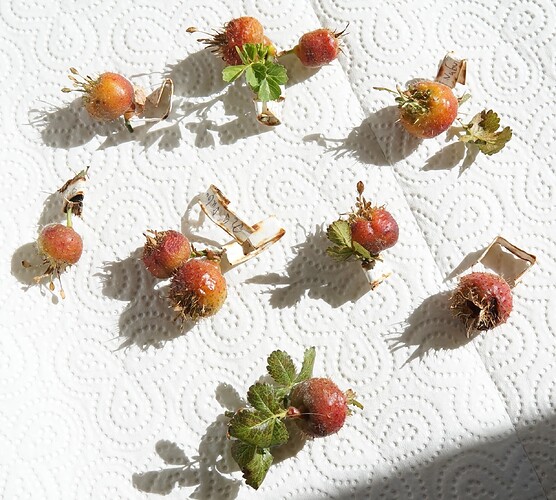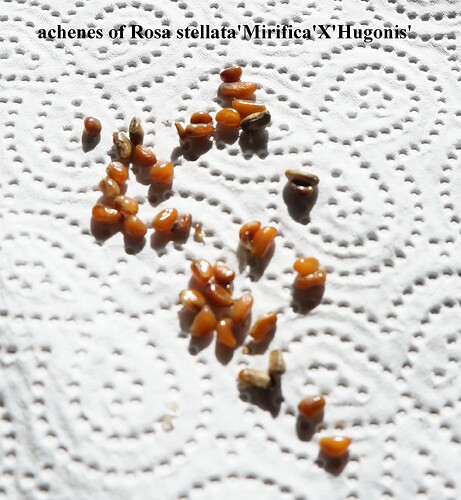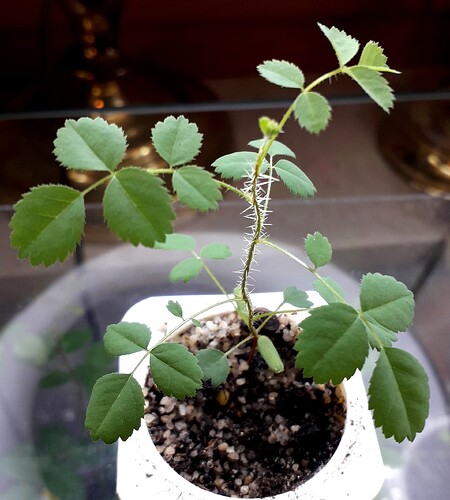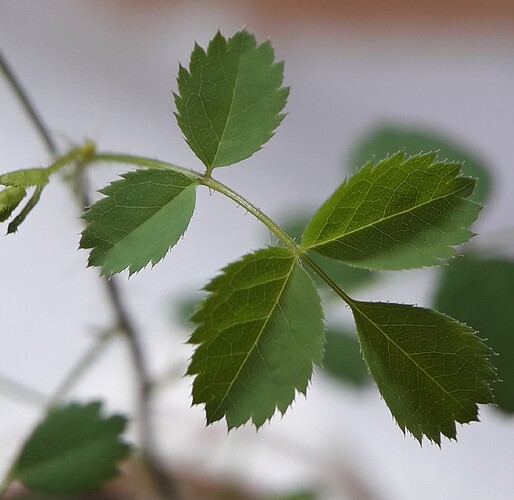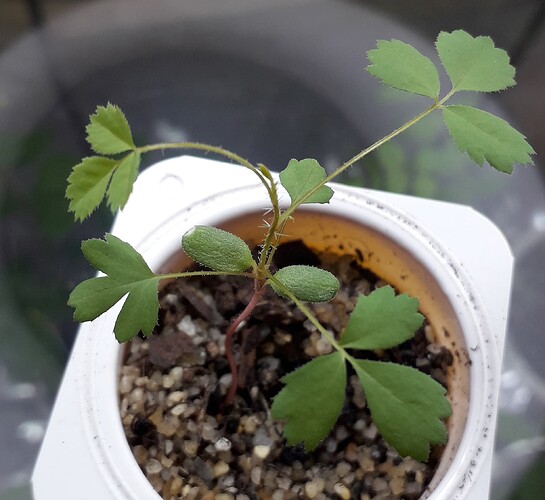I’ve grown Stellata mirifica for over twenty years. I love it! The plant grew beautifully in the old Newhall garden, providing many suckers to others who wished to grow it. For the past five years, it has languished in a five gallon can, depleted to about a third of the soil the can once held. It flowered each year, set hips and repeated its cycle. I finally planted it on the hill last summer, where it thumbed its nose at me and died to the root.
I’ve repeatedly tried in all this time to raise seedlings from this rose, without success. Last fall, I collected many self set hips from the dead plant, cleaned the nasty, prickly hips and planted them all. An interesting article I read long ago, suggested Persica, Minutifolia and Stellata are ancient species, predating what we think of as species today, and all have very stinky hips. It impresses me that being true desert plants, they have to attract carrion eaters to spread their seeds. The pulp inside the hips is very dense and fibrous with a very strong scent of Valerian root, like a smelly, old sneaker. The very small seeds hide in the dense fibers and are a bear to clean from it. Most usually appear very immature, even unfertilized. The “best” don’t really appear viable, being very small, dark, smooth and pear shaped, but I planted everything possible.
It’s taken three and a half months for these three babies to show their heads.
[flickr_photo src=http://farm8.staticflickr.com/7119/7051489205_ebe44677b7.jpg nsid=67995840@N04 id=7051489205]stellata mirifica (1)[/flickr_photo]
[flickr_photo src=http://farm8.staticflickr.com/7186/7051496453_4811eaa2c6.jpg nsid=67995840@N04 id=7051496453]stellata mirifica (3)[/flickr_photo]
There aren’t any signs of insects inside the enclosed table and no other critters can get in, but something ate the top off this one! GRRR!
[flickr_photo src=http://farm6.staticflickr.com/5196/7051489213_44cf015091.jpg nsid=67995840@N04 id=7051489213]stellata mirifica (2)[/flickr_photo]
I pray at least one of them makes it to flowering size, as difficult as they’ve been to get to germinate over the time I’ve had the species. Nothing has taken on it from any pollen and none of its pollen has resulted in any seedlings. Trying to find a source for it is as difficult as finding its only hybrid, Pink Mystery. To think, at one time, Sequoia Nursery had potted plants of Pink Mystery, Stellata mirifica AND Stellata and all three grew in my old garden. It’s getting scarier and scarier…
